| Listing 1 - 10 of 191 | << page >> |
Sort by
|
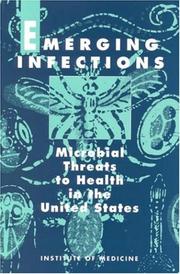
ISBN: 0309047412 9786610196333 1280196335 0309584639 0585020159 9780585020150 9780309047418 Year: 1992 Publisher: Washington, D.C. National Academy Press
Abstract | Keywords | Export | Availability | Bookmark
 Loading...
Loading...Choose an application
- Reference Manager
- EndNote
- RefWorks (Direct export to RefWorks)
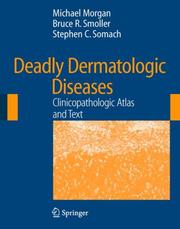
ISBN: 1281115703 9786611115708 0387688587 0387254420 Year: 2007 Publisher: New York, NY : Springer,
Abstract | Keywords | Export | Availability | Bookmark
 Loading...
Loading...Choose an application
- Reference Manager
- EndNote
- RefWorks (Direct export to RefWorks)
Almost exactly ten years ago, two young physicians joined me at the University of Oklahoma for the study of dermatopathology: Stephen C. Somach, a brilliant dermatologist-scholar from Cleveland, who was also a highly accomplished cellist, and Michael B. Morgan, an effervescent, newly minted pathologist from Florida, who was brimming with energy, curiosity, and zeal and was also spo- ing water skiis and a red Porsche! Bruce R. Smoller, whose impressive erudition is universally acknowledged, I met during a Residency Review committee visit to Stanford some ?fteen years ago. Each of these men has made original cont- butions to the dermatopathology literature as well as to patient care in the cli- cal setting. Their publications have broadened our understanding of the biologic behavior of pigmented lesions, cutaneous lymphomas, vascular lesions, and soft tissue tumors. It is indeed a pleasure to welcome their volume, Deadly Der- tologic Diseases, a unique and stimulating outcome of their enthusiastic collaboration. Deadly Dermatologic Diseases discusses a wide variety of entities–neoplastic, vascular, infectious, metabolic–each of which may eventuate in death of the patient. In addition, numerous tumors and dermatoses frequently associated with internal malignancies are reviewed. High-quality histologic photomic- graphs and clinical pictures accompany many of the discussions. A unique initial summary page facilitates the reading of each presentation. Recent relevant genetic and biochemical ? ndings in every chapter were particularly helpful to this reader.
Skin --- Diseases. --- Histopathology. --- Cutaneous diseases --- Dermatoses --- Dermatology --- Dermatology. --- Pathology. --- Emerging infectious diseases. --- Infectious Diseases. --- Emerging infections --- New infectious diseases --- Re-emerging infectious diseases --- Reemerging infectious diseases --- Communicable diseases --- Disease (Pathology) --- Medical sciences --- Diseases --- Medicine --- Medicine, Preventive --- Infectious diseases.
Book
ISBN: 184882842X 184882839X 9786612828454 1848828403 1282828452 Year: 2010 Publisher: Dordrecht : Springer,
Abstract | Keywords | Export | Availability | Bookmark
 Loading...
Loading...Choose an application
- Reference Manager
- EndNote
- RefWorks (Direct export to RefWorks)
Dermatology is unusual as a medical specialty in that the traditional language of medicine often does not fit the needs of the specialty. The formal language of dermatology is so distinctive, it can take many months to learn, much like a foreign language. Similarly, dermatopathology has its own language that differs dramatically from the language of pathology. Dermatology Terminology uniquely describes and catalogs dermatologic diseases with the verbiage dermatologists use when speaking to each other. With many disorders, a description can be reduced to a word, phrase, or acronym, where such a keyword substitutes for a much fuller and lengthier formal presentation. This book is a compilation of these keywords, together with photos of the diseases they represent, coupled with short descriptions and literature references for each disease. The descriptions have been prepared over many years for dermatology residents and medical students and as such this book is a key learning resource for all students of dermatology.
Dermatology -- Terminology. --- Medicine --Terminology. --- Dermatology --- Medicine --- Health & Biological Sciences --- Medicine. --- Dermatology. --- Infectious diseases. --- Medicine & Public Health. --- Infectious Diseases. --- Skin --- Diseases --- Emerging infectious diseases. --- Emerging infections --- New infectious diseases --- Re-emerging infectious diseases --- Reemerging infectious diseases --- Communicable diseases
Book
ISBN: 1789848253 1789848245 1838817778 Year: 2018 Publisher: IntechOpen
Abstract | Keywords | Export | Availability | Bookmark
 Loading...
Loading...Choose an application
- Reference Manager
- EndNote
- RefWorks (Direct export to RefWorks)
Tropical emerging diseases pose a significant risk for the circulation of old and new pathogens in areas previously unknown, also implying the possibility of new morbidities and mortalities and new consequences for naïve populations. Globalization, migration and travel are key factors for tropical diseases, and represent the need for integration of tropical medicine, travel medicine and epidemiology in the understanding of such complex situations. Neglected tropical diseases such as leprosy or Chagas disease, arboviral diseases, HIV, Ebola, and arenaviral infections are just a few examples. This book tries to update significant epidemiological and clinical research in many aspects with a multinational perspective.
Emerging infectious diseases. --- Tropical medicine. --- Diseases, Tropical --- Hygiene, Tropical --- Medicine --- Public health, Tropical --- Sanitation, Tropical --- Tropical diseases --- Medical climatology --- Emerging infections --- New infectious diseases --- Re-emerging infectious diseases --- Reemerging infectious diseases --- Communicable diseases --- Public Health --- Global Health --- Health Sciences
Book
ISBN: 1634840186 9781634840187 1634840143 9781634840149 Year: 2016 Publisher: New York
Abstract | Keywords | Export | Availability | Bookmark
 Loading...
Loading...Choose an application
- Reference Manager
- EndNote
- RefWorks (Direct export to RefWorks)
Tropical medicine. --- Emerging infectious diseases. --- Emerging infections --- New infectious diseases --- Re-emerging infectious diseases --- Reemerging infectious diseases --- Communicable diseases --- Diseases, Tropical --- Hygiene, Tropical --- Medicine --- Public health, Tropical --- Sanitation, Tropical --- Tropical diseases --- Medical climatology
Book

ISBN: 0833096117 9780833096111 9780833095749 0833095749 Year: 2016 Publisher: Santa Monica, California
Abstract | Keywords | Export | Availability | Bookmark
 Loading...
Loading...Choose an application
- Reference Manager
- EndNote
- RefWorks (Direct export to RefWorks)
"Recent high-profile outbreaks, such as Ebola and Zika, have illustrated the transnational nature of infectious diseases. Countries that are most vulnerable to such outbreaks might be higher priorities for technical support. RAND created the Infectious Disease Vulnerability Index to help U.S. government and international agencies identify these countries and thereby inform programming to preemptively help mitigate the spread and effects of potential transnational outbreaks. The authors employed a rigorous methodology to identify the countries most vulnerable to disease outbreaks. They conducted a comprehensive review of relevant literature to identify factors influencing infectious disease vulnerability. Using widely available data, the authors created an index for identifying potentially vulnerable countries and then ranked countries by overall vulnerability score. Policymakers should focus on the 25 most-vulnerable countries with an eye toward a potential "disease belt" in the Sahel region of Africa. The infectious disease vulnerability scores for several countries were better than what would have been predicted on the basis of economic status alone. This suggests that low-income countries can overcome economic challenges and become more resilient to public health challenges, such as infectious disease outbreaks"--
Emerging infectious diseases --- Communicable diseases --- Diseases --- Epidemics --- Disease outbreaks --- Outbreaks of disease --- Pandemics --- Pestilences --- Disease risk factors --- Risk factors in diseases --- Biosecurity --- Emerging infections --- New infectious diseases --- Re-emerging infectious diseases --- Reemerging infectious diseases --- Prevention. --- Risk factors. --- Political aspects. --- Outbreaks
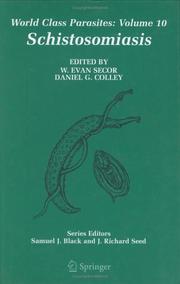
ISBN: 1280189894 9786610189892 0387233628 038723277X 1441935967 Year: 2005 Volume: 10 Publisher: New York, NY : Springer,
Abstract | Keywords | Export | Availability | Bookmark
 Loading...
Loading...Choose an application
- Reference Manager
- EndNote
- RefWorks (Direct export to RefWorks)
The goal of Schistosomiasis is to provide the reader with insights into the active research and programs currently related to schistosomiasis, and to use these insights as a way to project forward into the next 10-15 years of work on this disease, spanning the spectrum from research to public health interventions. A secondary goal of this volume is to initiate conversations among those working across the research-to-control spectrum on schistosomiasis about the future of their field, and by doing so lead to constructive efforts to identify and address the most critical questions and challenges related to schistosomiasis. The book covers four main areas: schistosome phylogenetics, gene expression, and the overall genome, including information on exciting new tools for addressing questions that have long been inaccessible to schistosomologists; the host-schistosome interaction at the larval to adult worm interface and addresses aspects important for vaccine development as well as how differential gene expression as detected by DNA microarrays may be utilized to develop tools for detection and control of infection or pathology; the development of the host immune response to eggs, granuloma formation and factors affecting the development and regulation of immunopathology; and the public health concerns associated with schistosomiasis, including morbidity control, host genetics, treatment and proposals for improved partnerships. The volume concludes with a chapter addressing the schisms that sometimes exist along the spectrum from basic research programs to the implementation of control schemes, and a proposal to make these differences benefit patients and researchers rather than succumb to base temptations to compete for resources to no one’s benefit. Like many of the diseases featured in the World Class Parasites series, the prospects for dramatic advances in schistosomiasis coincide with a seemingly shrinking pool of both human and material resources. The most meaningful progress will occur as the laboratory better understands the needs in the field and the field better understands the capabilities of the laboratory.
Schistosomiasis. --- Distomatosis. --- Distomiasis --- Trematode infections --- Helminthiasis --- Bilharziasis --- Bilharziosis --- Katayama disease --- Snail fever --- Distomatosis --- Morphology (Animals). --- Emerging infectious diseases. --- Animal Anatomy / Morphology / Histology. --- Infectious Diseases. --- Emerging infections --- New infectious diseases --- Re-emerging infectious diseases --- Reemerging infectious diseases --- Communicable diseases --- Animal morphology --- Animals --- Body form in animals --- Zoology --- Morphology --- Animal anatomy. --- Infectious diseases. --- Animal anatomy --- Biology --- Physiology --- Anatomy
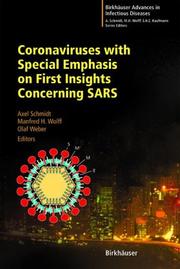
ISBN: 1280263792 9786610263790 3764373393 3764364629 Year: 2005 Publisher: Basel ; Boston : Birkhauser Verlag,
Abstract | Keywords | Export | Availability | Bookmark
 Loading...
Loading...Choose an application
- Reference Manager
- EndNote
- RefWorks (Direct export to RefWorks)
It is with great pleasure that we introduce the first volume of Birkhäuser Advances in Infectious Diseases. This book series focuses on relevant and trending topics in microbiology and infectious diseases with emphasis on emerging pathogens and related diseases. This interdisciplinary series presents latest advances and new approaches in molecular biology as well as insights into human and veterinary clinical medicine. Furthermore, matters in epidemiology, disease management, hygiene and prevention of infectious diseases are discussed. Emerging or novel pathogens are a grand challenge in medical science. Therefore, we focused the first volume of this series on the outbreak of SARS. The advent of SARS is a threat for people around the globe. Our modern technologies in communication and mobility have figuratively transformed the world into a village. This traffic, however, represents a new opportunity to spread diseases, particularly such of infectious nature from tiny villages throughout the entire world. In-depth knowledge of a novel pathogen's characteristics will help to manage or event prevent pandemias.
SARS (Disease) --- Coronavirus infections. --- Coronaviruses. --- Common cold viruses --- Coronaviridae --- Nidoviruses --- Coronavirus diseases --- Virus diseases --- Acute respiratory syndrome, Severe --- Respiratory syndrome, Severe acute --- Severe acute respiratory syndrome --- Coronavirus infections --- Respiratory infections --- Syndromes --- Emerging infectious diseases. --- Microbiology. --- Infectious Diseases. --- Medical Microbiology. --- Microbial biology --- Biology --- Microorganisms --- Emerging infections --- New infectious diseases --- Re-emerging infectious diseases --- Reemerging infectious diseases --- Communicable diseases --- Infectious diseases. --- Medical microbiology.
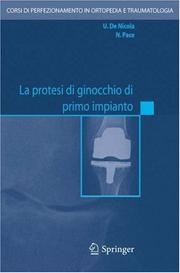
ISBN: 1281349402 9786611349400 8847003792 8847003156 8847055563 Year: 2005 Publisher: Milano : Springer,
Abstract | Keywords | Export | Availability | Bookmark
 Loading...
Loading...Choose an application
- Reference Manager
- EndNote
- RefWorks (Direct export to RefWorks)
La protesi totale di ginocchio è divenuta oggi intervento di routine nelle nostre sale operatorie. La diffusione di tale intervento non deve però far dimenticare quanto sia complessa questa chirurgia articolare, che si avvale anche di sofisticati ausili informatici. Basandosi sulla loro lunga e collaudata esperienza, gli autori di questo quarto volume della collana forniscono al lettore un’aggiornata rassegna dello stato dell’arte.
Knee --- Arthroplasty. --- Surgery. --- Joints --- Surgery, Plastic --- Excision of knee --- Surgery --- Orthopedics. --- Emerging infectious diseases. --- Surgical oncology. --- Orthopedic surgery. --- Rheumatology. --- Infectious Diseases. --- Surgical Oncology. --- Surgical Orthopedics. --- Internal medicine --- Connective tissues --- Operative orthopedics --- Orthopedics --- Surgery, Operative --- Cancer --- Oncologic surgery --- Oncological surgery --- Surgical oncology --- Emerging infections --- New infectious diseases --- Re-emerging infectious diseases --- Reemerging infectious diseases --- Communicable diseases --- Orthopaedics --- Orthopedia --- Diseases --- Excision --- Treatment --- Infectious diseases.
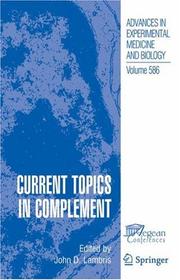
ISBN: 1280744898 9786610744893 038734134X 0387322310 1461498015 Year: 2006 Publisher: New York : Springer,
Abstract | Keywords | Export | Availability | Bookmark
 Loading...
Loading...Choose an application
- Reference Manager
- EndNote
- RefWorks (Direct export to RefWorks)
Complement has long been regarded as a pivotal effector arm of the innate im-mune response, eliciting important immunoregulatory functions in the context of inflammation and also serving as a vital link between the innate and adaptive immune response. In the post-genomic era, our knowledge of the innate immune system is enriched by findings that point to novel functions that do not strictly correlate with immunological defense and surveillance, immune modulation or inflammation. Several studies indicate that complement proteins exert functions that are either more complex than previously thought, or go well beyond the innate immune character of the system. The advent of high-throughput platforms for genome and proteome-wide profiling, together with the enormous amount of raw genetic information that has accumulated in the databases, have stirred new expectations in biomedical research. They have led complementologists to revisit established biological systems, such as the complement system, from a global and integrative perspec-tive. Complement research is now faced with the challenge of trying to integrate isolated biochemical pathways into complex gene and protein regulatory cir-cuits. In this respect, scientists from around the world convened at the Third Aegean Conferences Workshop on Complement Associated Diseases, Animal Models, and Therapeutics (June 5–10, 2005), to discuss recent advances in this fast evolving field. This volume represents a collection of topics on the "novel" functions of complement, pathophysiology, protein structures, design of complement inhibitors, and complement assays discussed during the conference.
Complement (Immunology) --- Blood proteins. --- Plasma proteins --- Serum proteins --- Blood plasma --- Proteins --- Serum --- Alexin --- Complements (Immunity) --- Blood proteins --- Immunology. --- Microbiology. --- Emerging infectious diseases. --- Pathology. --- Infectious Diseases. --- Disease (Pathology) --- Medical sciences --- Diseases --- Medicine --- Medicine, Preventive --- Emerging infections --- New infectious diseases --- Re-emerging infectious diseases --- Reemerging infectious diseases --- Communicable diseases --- Microbial biology --- Biology --- Microorganisms --- Immunobiology --- Life sciences --- Serology --- Infectious diseases.
| Listing 1 - 10 of 191 | << page >> |
Sort by
|

 Search
Search Feedback
Feedback About UniCat
About UniCat  Help
Help News
News